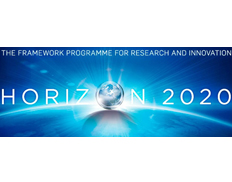Print

Effects of Electric Fields on Turbulent Combustion: EnFoRCe
Details
Locations:France
Start Date:Oct 1, 2020
End Date:Sep 30, 2022
Contract value: EUR 184,707
Sectors: Electrical Engineering, Science & Innovation
Description
Programme(s): H2020-EU.1.3.2. - Nurturing excellence by means of cross-border and cross-sector mobility
Topic(s): MSCA-IF-2019 - Individual Fellowships
Call for proposal: H2020-MSCA-IF-2019
Funding Scheme: MSCA-IF-EF-SE - Society and Enterprise panel
Grant agreement ID: 898458
Project description:
Modelling sheds new light on the interaction between electric fields and turbulent combustion
Applying an external electric field has proved to be effective in controlling the combustion process in small burners as well as in industrial-scale systems. However, the mechanism of the interaction between the reacting flows and the electric field is not fully understood. The EU-funded EnFoRCe project will study the behavior of a turbulent reacting mixing layer impinged by an external electric field. This investigation will be performed using the open-source hypersonic task-based research (HTR) solver, which can efficiently execute computational simulations of reacting flows by leveraging Regent, a programming language designed to achieve optimal performance on the nowadays high-performance computers with heterogeneous architecture. The simulation results will enable researchers to investigate how the electric field modifies the thermochemical fields in the turbulent reacting layer as well as how the electric force affects the statistical properties of turbulence.
Objective:
"The application of an external electric field has proven to be a very effective way of controlling combustion. Laboratory test cases have shown that this technology is capable of controlling many aspects of premixed and non-premixed combustion in small burners as well as in industrial-scale systems. However, the fundamental aspects of this interaction between a reacting flow and an electric field remain mostly unknown and this prevents the application of this technology in industrial applications. The complexity of the required models and the large computational cost associated with the simulation of the electric response of a flame to an electric field have so far limited the numerical analysis of this type fo flows to one-dimensional and two-dimensional configurations taking into account only laminar flames. Considering that most of the industrial burners are operated in the turbulent regime, it appears necessary to shed light on the behavior of electrified flames at high Reynolds number. In this context, the present project proposes to study the behavior of a turbulent reacting mixing layer impinged by an external electric field using a detailed description of the reacting and transport phenomena involved in this flow. The calculation of this complex configuration will be allowed by the use of the parallel computing paradigm proposed with the ""Regent"" programming language recently developed at Stanford University. The result of these calculations will allow me to extensively define the modification induced by the imposed electric field on the thermochemical fields produced in the turbulent reacting layer as well as the impact of the electric force on the statistical properties of the turbulence. Moreover, the database obtained with these calculations will be used as a benchmark solution for the development and validation of a reduced-order model necessary for the calculation of electrified reacting flows in industrial applications."

